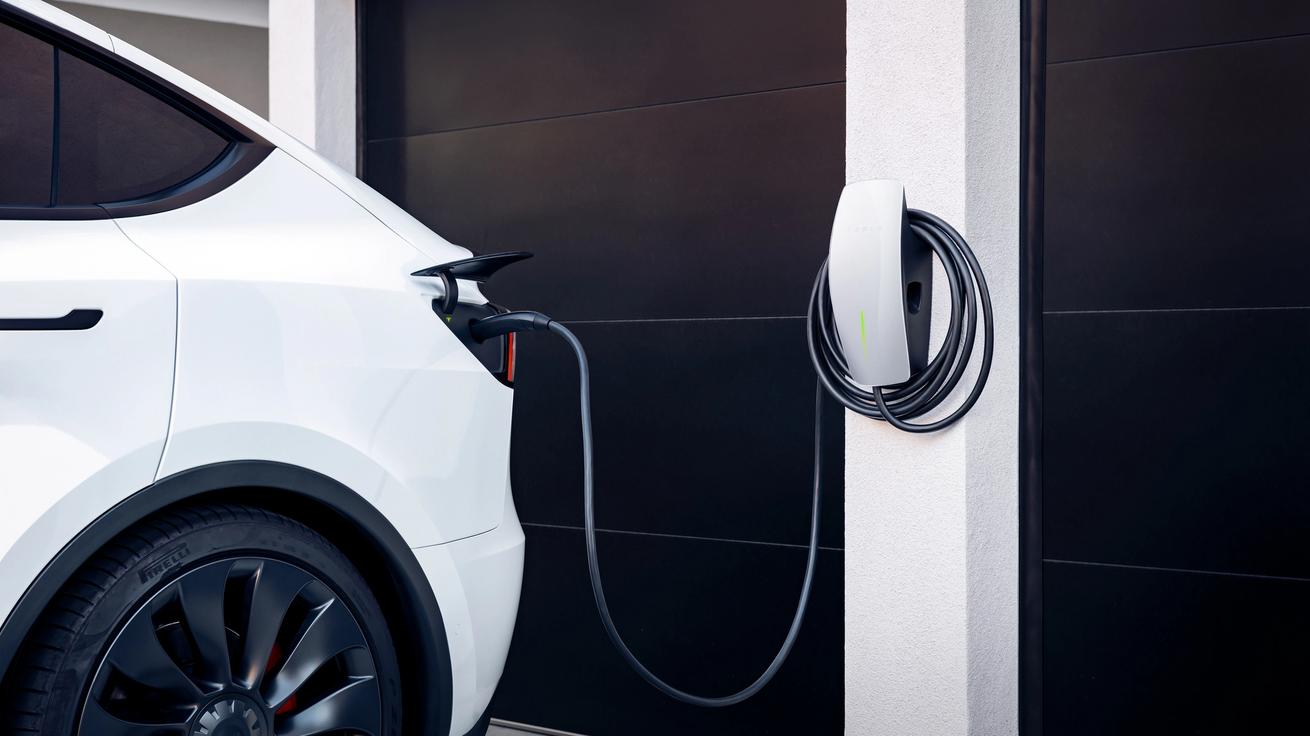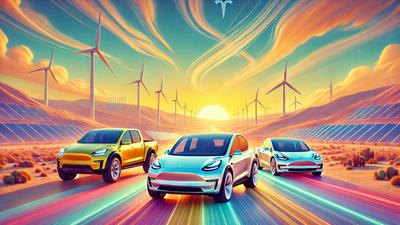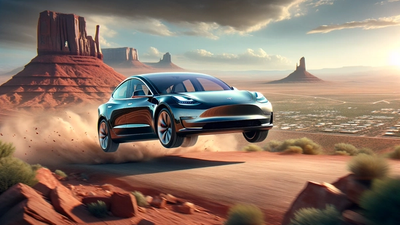Electric vehicles continue to gain popularity as a more environmentally sustainable and cost-effective alternative to gas-powered cars, but some drivers thinking about making the switch to an EV may have a few misgivings. One of the biggest considerations for electric vehicle owners is how and where to charge their vehicles. That’s why developing a home EV charging plan is essential to maximize savings and convenience while making the transition to electric.
The ability to conveniently and affordably charge at home is a major selling point for most consumers considering an electric vehicle. Home charging stations provide cheaper and more accessible charging compared to public stations. They also allow electric vehicle owners to charge during off-peak hours, minimizing costs. The days of public charging stations being as common as gas stations around the country are still some years away, so installing reliable and convenient home charging infrastructure is a crucial part of taking advantage of the full benefits of EV ownership.
This guide aims to equip you with comprehensive knowledge of the home EV charging landscape. We’ll explore charger types and specifications and evaluate infrastructure needs, installation considerations, smart charging solutions, charging best practices, common concerns, and future innovations in charging tech. Whether you already own an electric vehicle or are just learning about what’s involved in making the electric switch, this article is designed to help you make informed home charging decisions.
Benefits of Home EV Charging
Charging your EV at home, as opposed to relying solely on public charging infrastructure, provides EV drivers with three important benefits:
Cost Savings
Electricity rates are lowest overnight during off-peak hours when demand is reduced. By taking advantage of the flexibility of a home charger and using it overnight or during other low-demand times, drivers can “fuel up” for a fraction of the price of public fast charging stations. In addition, some utilities even offer special EV rates and other savings.
Convenience and Accessibility
Home charging stations eliminate the need to hunt for available public chargers that meet your vehicle's specs and needs. Depending on what electric vehicle you have (and especially if it is from an automaker that hasn’t joined Tesla’s extensive NACS network), you may have limited access to usable charging stations until more infrastructure is built. With home chargers, simply plug in whenever for consistent, convenient fueling.
Sustainability
For EV adopters motivated to reduce their environmental impact, relying on home charging from a standard electric grid produces far lower emissions than gas vehicles.
Understanding Your EV Charging Options
There are three primary levels of EV charging to consider for home installation. The specifications and use cases vary between charger levels:
Level 1
- Overview: Basic 120V connection through a standard 3-prong outlet. Comes standard with most EV purchases and is a good option for occasional charging.
- Specifications: Provides 2-5 miles of range per hour charged. Full charge time is often over 24 hours.
- Best For: Infrequent drivers and hybrid EVs with small battery packs. Reliable for overnight charging to start each day fully topped up.
Level 2
- Overview: Faster 240V connection through a dedicated charging station. Requires a professional for residential installation.
- Specifications: Provides 10-20 miles of range per charging hour and can fully recharge EVs overnight.
- Best For: Daily home EV charging needs. Ideal setup for homeowners. Enables you to conveniently start every day with a "full tank."
Level 3 DC Fast Charging
- Overview: Uses a high-powered 480V special connection for rapid charging. These are mainly found at public charging plaza locations. There are three types:
- Tesla Supercharger: Use a special proprietary socket. Can be used by Teslas and other automakers that have joined Tesla’s NACS network.
- SAE Combo/CCS: Use the same socket as a Level 2, but with two additional pins grafted beneath to enable DC fast charging.
- Specifications: Adds up to 200 miles in 15-30 minutes. Requires special equipment and involves a more complex installation.
- Best For: Charging on the go for road trips. Impractical for most home applications due to high unit costs and power demands.
Evaluating Your Home Charging Needs
It’s important to consider your current and future vehicle choices and daily driving habits in order to properly determine what level of charging capability best fits your lifestyle. You can do this in a few simple steps:
- Make a log tracking daily mileage needs for 1-2 weeks to accurately gauge energy use.
- Research full charge times and rates for current and desired EV models to estimate home charging requirements.
- Look for chargers that can meet or exceed your daily energy needs to ensure flexibility.
- Prepare for future EV upgrades to minimize infrastructure changes down the road. Consider:
- Installing conduits: Adding proper conduits during installation allows for easier cable upgrades in the future.
- Buying smart charging technology: Investing in smart charging technology enables you to optimize electricity usage, control charging remotely, and take advantage of software upgrades that may improve features.
- Look at available incentives and rebates in your area to reduce the cost of home charging equipment and installation.
Home EV Charging Infrastructure
Installing the proper electrical infrastructure tailored to your EV's charging specs will ensure you get the best home charging experience:
Level 2 Charging Station Installation
While there is a wide range of models to consider from brands like ChargePoint, JuiceBox, and Wallbox, selecting the optimal Level 2 charger requires installing the right options that support its use. This includes:
- Matching charging capacity (amperage) to your EV's maximum acceptance rate.
- Considering smart technologies capable of:
- Sending information (charging time, speed, energy usage) via Wi-Fi or Bluetooth to a cloud-based management platform.
- Allowing you to optimize energy consumption based on your residence’s maximum energy capacity and any limits imposed by the utility company about energy usage.
- Automating even energy distribution for households with more than one charger
- Determining whether hardwired or plug-in installation suits your home best.
- A hardwired electric vehicle charger is wired directly into your home’s electrical system, which means it won’t utilize a 240v outlet. Instead, it will draw power directly from the main panel.
- A plug-in electrical vehicle charger utilizes an installed 240v outlet. Once the installation is complete, you can plug in the charger and disconnect it as needed.
- Which system is best for you will depend on your vehicle model, home electrical infrastructure, safety considerations, and your budget.
A qualified electrician will handle the complex steps of the 220V installation process, including:
- Mounting the wall-connected control box safely indoors or a garage-based pedestal charger outdoors.
- Running conduit through walls and ceilings from your breaker panel to the mount box.
- Connecting wiring with proper gauge copper strands.
- Configuring the dedicated 40-60 amp circuit breaker.
Home Electrical Upgrades
Your existing electrical service panel may need upgrades to support Level 2 charging. This can include:
- Having an electrician inspect your home’s panel, wiring, and overall electric capacity.
- Upgrading an outdated 100 amp panel to support 200 amps may be required.
- Installing thicker gauge wiring to ensure added capacity and safe heat dissipation.
The good news is that making some of these changes may also provide room for expanding home energy needs down the road.
Smart Charging Solutions
Today's EV chargers offer intelligent capabilities through mobile apps and voice control integration so you can manage charging remotely. Features include:
- Real-time status monitoring, alerts, diagnostics.
- Remote start/stopping and charging schedule customization.
- Energy usage tracking that shows stats and costs.
- Smart home platforms like Amazon Alexa, Google Home, and Apple HomeKit that can control your EV charger.
- Sensors that can activate conditional automation triggers.
Tips for Efficient and Safe Home Charging
Follow these best practices to enhance the convenience, cost savings, and electrical safety of your home charging installation:
- Schedule overnight charging during off-peak hours when rates are lowest.
- Avoid extreme 100% to 0% battery depletion and full charges to prolong battery lifespan.
- Have an electrician inspect wiring and stations annually to identify deterioration.
- Check your charger specification's operating temperature range to account for harsh weather and cold winters.
- When the temperature decreases, set the charging current at lower amps to prevent damage.
Dispelling Concerns About EV Battery Charging
Range Anxiety
One of the biggest concerns that EV drivers have is known as “range anxiety.” Many are worried that they’ll find themselves running low on battery power with no place to charge their vehicle, leaving them stranded. Setting up a home charging system where you can “top off” your battery each night alleviates these concerns. Starting each day with a full charge with a Level 2 home station gives you the confidence and flexibility to comfortably complete most daily driving needs.
Charging Misconceptions
Public charging networks continue to expand, but the current lack of chargers in some areas should not deter you from transitioning to an EV, especially when you focus your charging where it's most affordable and efficient—at home. For the vast majority of drivers, daily home charging will be sufficient to meet their energy needs.
In addition, advances in lithium battery technology have extended EV battery lifespans. Experts predict most new EV batteries will last up to 200,000 miles (Tesla claims that their batteries may even last up to between 300,000 and 500,000 miles). Batteries are also increasingly recyclable and reusable, offering a potential residual value to your battery for resale, even when it’s done powering your EV.
Make Home Charging Simple With EV Life
There are numerous federal and state EV incentives aimed at helping you save money when making the switch to electric, like the federal tax credit outlined in the Inflation Reduction Act, the Colorado EV Tax Credit, grants awarded by the Clean Vehicle Assistance Program, and other state and local programs. But did you know that there are also additional incentives that can help you save on home charger installation?
Power companies like PG&E, Xcel Energy, and other utilities offer rebates for qualified EV drivers that can save you hundreds of dollars on the cost of your home charging station. And when you finance your electric vehicle purchase through EV Life, we can help you find and apply for every incentive you’re eligible for.
When you apply for the EV Climate Loan with EV Life, here’s how it works:
- Pre-qualify for more than financing. When you pre-qualify for a loan, we help you maximize your federal and state tax credits, rebates, and other incentives. We then help you apply for all the paperwork with our “Turbo Tax-style” incentive filing tools.
- Bundle charging. EV Life can help you get an instant quote for EV charging equipment installation, as well as any incentives you qualify for, and bundle it into your auto financing—all with one lower monthly payment.
- One low payment. Once we’ve determined every available dollar you can save, EV Life will gather all your incentives and apply them directly to your loan, significantly reducing your monthly payment.
Financing with EV Life guarantees to deliver the best purchase price and the lowest rate on electric vehicles and EV charging solutions, saving the planet while saving your pocketbook.
Get pre-qualified today to find out how much you could save on your new electric vehicle and home charger.






